Sodium diethyldithiocarbamate
Modify Date: 2025-08-21 14:35:09
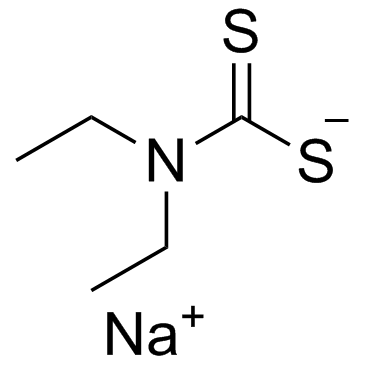
Sodium diethyldithiocarbamate structure
|
Common Name | Sodium diethyldithiocarbamate | ||
|---|---|---|---|---|
| CAS Number | 148-18-5 | Molecular Weight | 171.259 | |
| Density | 1.086g/cm3 | Boiling Point | 176.4ºC at 760mmHg | |
| Molecular Formula | C5H10NNaS2 | Melting Point | 95°C | |
| MSDS | N/A | Flash Point | 60.5ºC | |
Use of Sodium diethyldithiocarbamateDitiocarb sodium (Sodium diethyldithiocarbamate) is an accelerator of the rate of copper cementation. Sodium diethyldithiocarbamate reduces the incidence of HIV infection. |
| Name | Sodium diethyldithiocarbamate |
|---|---|
| Synonym | More Synonyms |
| Description | Ditiocarb sodium (Sodium diethyldithiocarbamate) is an accelerator of the rate of copper cementation. Sodium diethyldithiocarbamate reduces the incidence of HIV infection. |
|---|---|
| Related Catalog | |
| Target |
HIV[2] |
| In Vitro | Ditiocarb sodium (Sodium diethyldithiocarbamate) reacts with the Cu2+ solution giving a complex of copper diethyldithiocarbamate, which enhances the rate of cementation[1]. Ditiocarb sodium is an agent with strong antioxidant capacity and chelating activities[2]. |
| In Vivo | Ditiocarb sodium (Sodium diethyldithiocarbamate) improves the depressed immune responses of newborn and aged mice. Sodium diethyldithiocarbamate prevents cisplatin nephrotoxicity in animals without reducing the antitumor activity. In that AIDS model, Ditiocarb sodium reduces lymphadenopathy and hypergammaglobulinemia, restores immunocompetence, and prolongs survival[2]. |
| References |
| Density | 1.086g/cm3 |
|---|---|
| Boiling Point | 176.4ºC at 760mmHg |
| Melting Point | 95°C |
| Molecular Formula | C5H10NNaS2 |
| Molecular Weight | 171.259 |
| Flash Point | 60.5ºC |
| Exact Mass | 171.015228 |
| PSA | 60.63000 |
| LogP | 1.81060 |
| Water Solubility | >=10 g/100 mL at 14 ºC |
Synonym:Sodium diethyldithiocarbamate trihydrate; Diethylcarbamodithioic acid sodium salt trihydrate; Dithiocarb trihydrate; DTC trihydrate; DDC trihydrate; DEDC trihydrate; DDTC trihydrate; DeDTC trihydrate; chelating agent with strong affinity for H Section 2 - COMPOSITION, INFORMATION ON INGREDIENTS
Risk Phrases: 22 Section 3 - HAZARDS IDENTIFICATION EMERGENCY OVERVIEW
Harmful if swallowed.Hygroscopic (absorbs moisture from the air). Potential Health Effects Eye: Causes eye irritation. Skin: Causes skin irritation. Ingestion: May be harmful if swallowed. Contact with stomach acid may liberate carbon disulfide which primarily affects the nervous, cardiovascular, and reproductive systems. Inhalation: Causes respiratory tract irritation. Chronic: May cause reproductive and fetal effects. Prolonged or repeated exposure affects the nervous system. Section 4 - FIRST AID MEASURES Eyes: Flush eyes with plenty of water for at least 15 minutes, occasionally lifting the upper and lower eyelids. Get medical aid immediately. Skin: Get medical aid. Flush skin with plenty of water for at least 15 minutes while removing contaminated clothing and shoes. Wash clothing before reuse. Ingestion: Do not induce vomiting. If victim is conscious and alert, give 2-4 cupfuls of milk or water. Never give anything by mouth to an unconscious person. Get medical aid immediately. Inhalation: Get medical aid immediately. Remove from exposure and move to fresh air immediately. If not breathing, give artificial respiration. If breathing is difficult, give oxygen. Notes to Physician: Section 5 - FIRE FIGHTING MEASURES General Information: As in any fire, wear a self-contained breathing apparatus in pressure-demand, MSHA/NIOSH (approved or equivalent), and full protective gear. During a fire, irritating and highly toxic gases may be generated by thermal decomposition or combustion. This material in sufficient quantity and reduced particle size is capable of creating a dust explosion. Extinguishing Media: Use water spray, dry chemical, carbon dioxide, or appropriate foam. Section 6 - ACCIDENTAL RELEASE MEASURES General Information: Use proper personal protective equipment as indicated in Section 8. Spills/Leaks: Vacuum or sweep up material and place into a suitable disposal container. Clean up spills immediately, observing precautions in the Protective Equipment section. Avoid generating dusty conditions. Provide ventilation. Section 7 - HANDLING and STORAGE Handling: Wash thoroughly after handling. Remove contaminated clothing and wash before reuse. Use with adequate ventilation. Minimize dust generation and accumulation. Avoid contact with eyes, skin, and clothing. Avoid breathing dust. Storage: Store in a cool, dry place. Keep container closed when not in use. Store protected from moisture. Refrigeration has been recommended. Section 8 - EXPOSURE CONTROLS, PERSONAL PROTECTION Engineering Controls: Facilities storing or utilizing this material should be equipped with an eyewash facility and a safety shower. Use adequate ventilation to keep airborne concentrations low. Exposure Limits CAS# 148-18-5: Germany: 2 mg/m3 TWA (inhalable fraction) Netherlands: 2 mg/m3 MAC CAS# 20624-25-3: Personal Protective Equipment Eyes: Wear appropriate protective eyeglasses or chemical safety goggles as described by OSHA's eye and face protection regulations in 29 CFR 1910.133 or European Standard EN166. Skin: Wear appropriate protective gloves to prevent skin exposure. Clothing: Wear appropriate protective clothing to prevent skin exposure. Respirators: Follow the OSHA respirator regulations found in 29 CFR 1910.134 or European Standard EN 149. Use a NIOSH/MSHA or European Standard EN 149 approved respirator if exposure limits are exceeded or if irritation or other symptoms are experienced. Section 9 - PHYSICAL AND CHEMICAL PROPERTIES Physical State: Crystalline powder Color: very slightly yellow Odor: Not available. pH: 11.6 (10% aq soln) Vapor Pressure: Not available. Viscosity: Not available. Boiling Point: Not available. Freezing/Melting Point: 95-98.5 deg C Autoignition Temperature: Not available. Flash Point: Not applicable. Explosion Limits, lower: N/A Explosion Limits, upper: N/A Decomposition Temperature: Solubility in water: Soluble. Specific Gravity/Density: Molecular Formula: C5H10NNaS2.3H2O Molecular Weight: 225.31 Section 10 - STABILITY AND REACTIVITY Chemical Stability: Stable under normal temperatures and pressures. Conditions to Avoid: Dust generation, moisture, excess heat. Incompatibilities with Other Materials: Strong oxidizing agents, strong acids. Hazardous Decomposition Products: Nitrogen oxides, carbon monoxide, oxides of sulfur, carbon dioxide. Hazardous Polymerization: Has not been reported Section 11 - TOXICOLOGICAL INFORMATION RTECS#: CAS# 148-18-5: EZ6475000 CAS# 20624-25-3: EZ6550000 LD50/LC50: CAS# 148-18-5: Oral, mouse: LD50 = 1500 mg/kg; Oral, rabbit: LD50 = 500 mg/kg; Oral, rat: LD50 = 1500 mg/kg; Skin, rat: LD50 = >1 gm/kg. CAS# 20624-25-3: Oral, mouse: LD50 = 1500 mg/kg; Oral, rat: LD50 = 1500 mg/kg. Carcinogenicity: Sodium diethyldithiocarbamate, anhydrous - Not listed by ACGIH, IARC, or NTP. Sodium diethyldithiocarbamate trihydrate - Not listed by ACGIH, IARC, or NTP. Other: See actual entry in RTECS for complete information. Section 12 - ECOLOGICAL INFORMATION Section 13 - DISPOSAL CONSIDERATIONS Dispose of in a manner consistent with federal, state, and local regulations. Section 14 - TRANSPORT INFORMATION IATA Not regulated as a hazardous material. IMO Not regulated as a hazardous material. RID/ADR Not regulated as a hazardous material. Section 15 - REGULATORY INFORMATION European/International Regulations European Labeling in Accordance with EC Directives Hazard Symbols: XN Risk Phrases: R 22 Harmful if swallowed. Safety Phrases: WGK (Water Danger/Protection) CAS# 148-18-5: 3 CAS# 20624-25-3: 2 Canada CAS# 148-18-5 is listed on Canada's DSL List. CAS# 148-18-5 is not listed on Canada's Ingredient Disclosure List. CAS# 20624-25-3 is not listed on Canada's Ingredient Disclosure List. US FEDERAL TSCA CAS# 148-18-5 is listed on the TSCA inventory. CAS# 20624-25-3 is not on the TSCA Inventory because it is a hydrate. It is considered to be listed if the CAS number for the anhydrous form is on the inventory (40CFR720.3(u)(2)). SECTION 16 - ADDITIONAL INFORMATION N/A |
CHEMICAL IDENTIFICATION
HEALTH HAZARD DATAACUTE TOXICITY DATA
MUTATION DATA
|
| Hazard Codes | Xi |
|---|---|
| WGK Germany | 1 |
| HS Code | 2930909090 |
| Precursor 0 | |
|---|---|
| DownStream 10 | |
| HS Code | 2930909090 |
|---|---|
| Summary | 2930909090. other organo-sulphur compounds. VAT:17.0%. Tax rebate rate:13.0%. . MFN tariff:6.5%. General tariff:30.0% |
| EINECS 205-710-6 |
| sodium,N,N-diethylcarbamodithioate |
| Diethyldithiocarbamic acid sodium salt |
| MFCD00041028 |
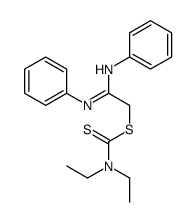 CAS#:105858-86-4
CAS#:105858-86-4![[2-(4-methylanilino)-2-(4-methylphenyl)iminoethyl] N,N-diethylcarbamodithioate structure](https://image.chemsrc.com/caspic/298/105858-90-0.png) CAS#:105858-90-0
CAS#:105858-90-0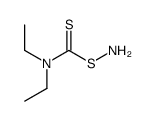 CAS#:106860-28-0
CAS#:106860-28-0![[2-(4-ethoxyphenyl)imino-2-(4-methoxyanilino)ethyl] N,N-diethylcarbamodithioate structure](https://image.chemsrc.com/caspic/146/105858-94-4.png) CAS#:105858-94-4
CAS#:105858-94-4![[2-(4-ethoxyanilino)-2-(4-methylphenyl)iminoethyl] N,N-diethylcarbamodithioate structure](https://image.chemsrc.com/caspic/222/105858-92-2.png) CAS#:105858-92-2
CAS#:105858-92-2![[2-anilino-2-(4-methylphenyl)iminoethyl] N,N-diethylcarbamodithioate structure](https://image.chemsrc.com/caspic/239/105858-87-5.png) CAS#:105858-87-5
CAS#:105858-87-5 CAS#:100-46-9
CAS#:100-46-9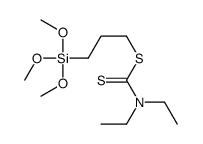 CAS#:143673-96-5
CAS#:143673-96-5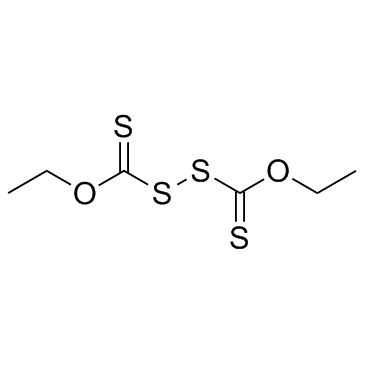 CAS#:502-55-6
CAS#:502-55-6 CAS#:54451-16-0
CAS#:54451-16-0
